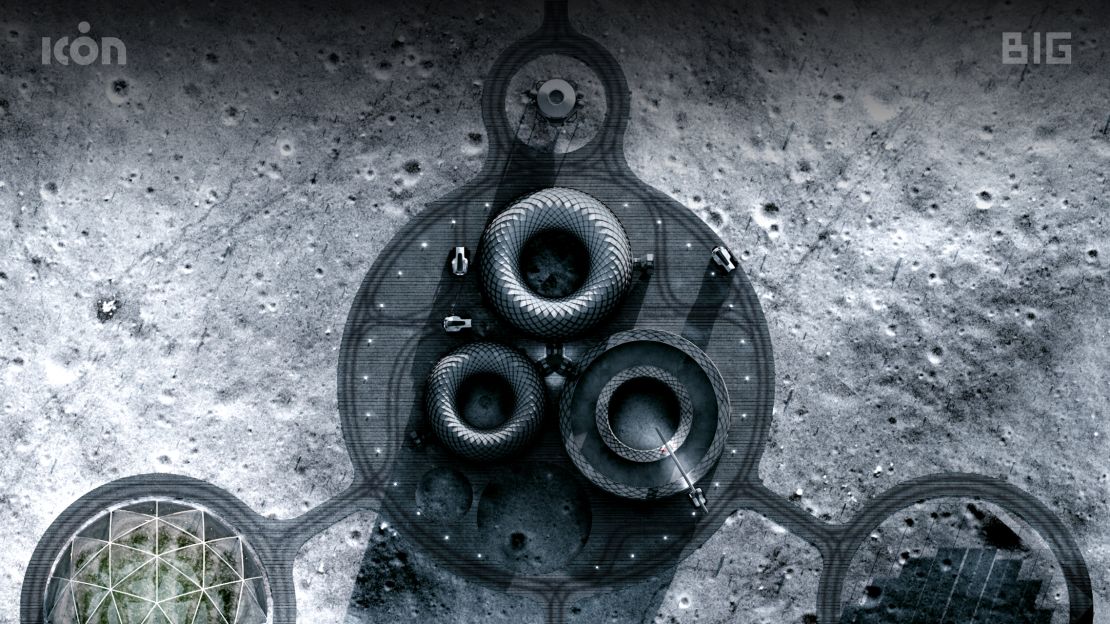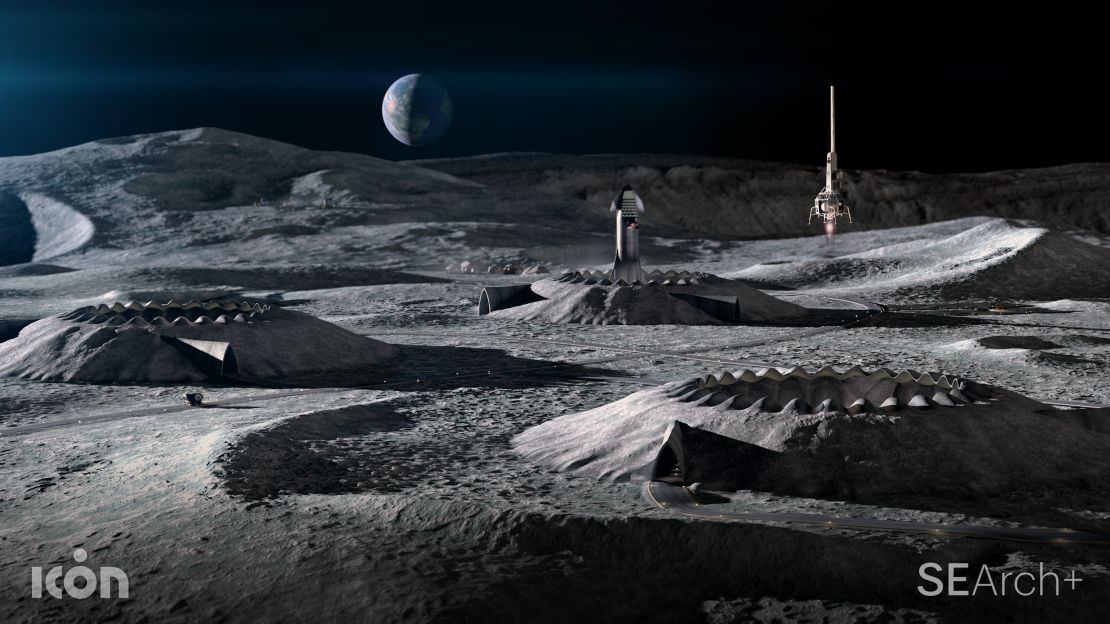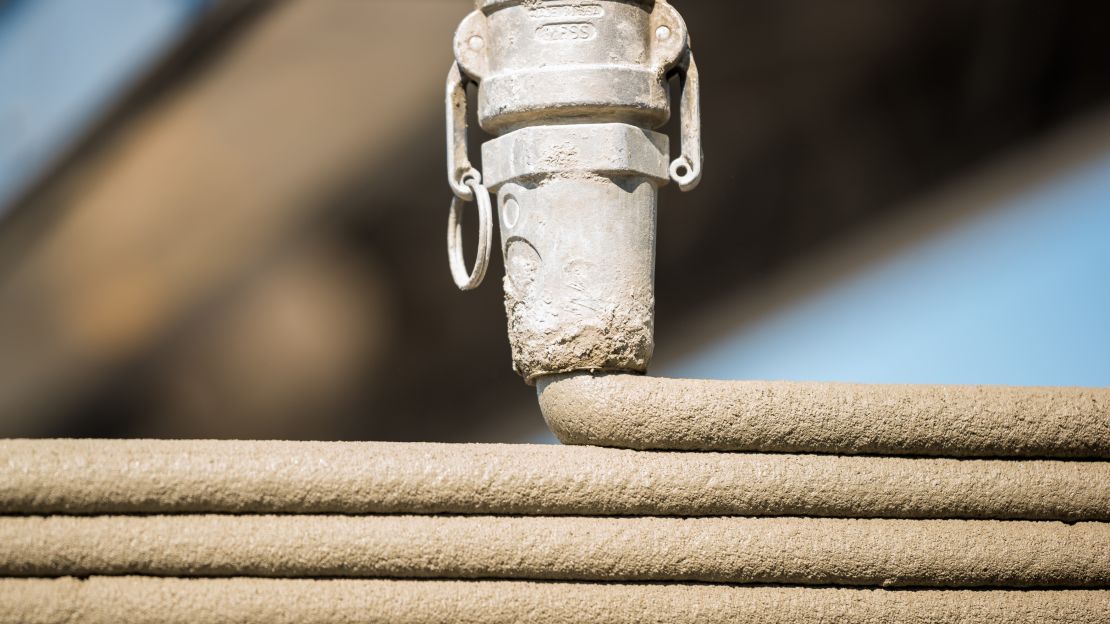The last time a person stepped foot on the moon was 1972. Now, the moon is back on NASA’s space agenda. This time around the agency isn’t just visiting – it’s planning to stay.
With its Artemis missions starting next year, NASA aims to have astronauts on the moon in 2024 and anticipates a permanent lunar base by the end of the decade. This would be the first habitat ever constructed on an extraterrestrial surface, and the challenges are unprecedented.
Sending a large quantity of construction materials to the moon would be expensive and time-consuming. But Texas-based startup ICON says it has a sci-fi solution – 3D printing a lunar base from moon dust.
ICON is working with NASA to develop technology that can turn moon dust into a concrete-like material, says co-founder and CEO Jason Ballard. Moon dust, also known as lunar regolith, is the sand-like topsoil that covers the moon’s surface, formed from minerals and tiny shards of glass created over millions of years as meteoroids hit the moon. It’s sharp, abrasive, and extremely clingy – the Apollo astronauts found it stuck to everything, including their space suits. There’s plenty of it, which means there’s a huge supply of raw materials if ICON is successful.

The initiative is named Project Olympus after the largest-known volcano in the solar system – aptly conveying the mountain-sized challenge the team faces. But Ballard isn’t just shooting for the moon. By designing a lunar habitat, he hopes to make construction on Earth cleaner, faster and cheaper, too.
Project Olympus
ICON has been using 3D printing technology to build social housing in Mexico and Texas, since 2018. Using a concrete-based mixture called lavacrete, its Vulcan printer can print around 500-square-feet in 24 hours.
But the moon is a “radically different world,” says Ballard. From Earth, it looks like a serene, smooth, silver orb but it is subject to high levels of radiation, violent moonquakes, extreme temperature swings and frequent strikes by micrometeorites that crash through its thin atmosphere, he says.
And turning moon dust into building material is another huge challenge. The team is experimenting with small samples of moon dust in a lab – working out how to change its state with microwaves, lasers and infrared light, while using “little to no additives,” says Ballard.

ICON worked with two architectural firms, Bjarke Ingels Group (BIG) and Space Exploration Architecture (SEArch+), to explore the possibilities of 3D printing technology.
The team studied habitats in extreme environments, including the McMurdo Station in Antarctica and the International Space Station, and used their findings to create a range of lunar design concepts, says Ballard.
The architects had to consider how to create an environment that is safe as well as comfortable to live in, says BIG founder Bjarke Ingels.
The proposal by SEArch+ features a tall, multi-story structure with protective 3D-printed petals shielding a core that would be built on Earth, while BIG designed a circular structure which could be entirely printed on the moon.
BIG’s design includes a visible membrane of water padding the walls of the bedroom – “a good insulant against radiation,” says Ingels – which will give astronauts extra protection while they sleep.
The radiation means that windows must be kept to a minimum, so Ingels carefully chose the location of the building’s only one – which always faces Earth.

A “double shell” structure and exterior latticework, which can be packed with loose lunar dust, provide additional protection from radiation and meteorites, says Ingels.
In addition to living and working spaces for astronauts, the lunar base would need to incorporate landing pads, roads and storage sheds. Human presence in space has been “dominated by engineering” so far, says Ingels. With multiple industries working together he hopes that the first permanent structure on the moon can be “aspirational” in design as well as an engineering marvel.
A gateway to the galaxy
NASA began exploring 3D printing as a possible space construction technology with the launch of the 3D-Printed Habitat Competition in 2015. Both SEArch+ and ICON took part in the initiative, with SEArch+ placing first for its design of the Mars X House.
With the Artemis missions launching next year, NASA’s first step towards a lunar habitat is the “Gateway,” a space station in the moon’s orbit, says spokesperson Clare Skelly. Astronauts will live and work on the Gateway and shuttle to the moon, staying in their landers for up to a week.

Its goal, however, is a permanent base, from which to explore the moon in more depth and and test technology for human survival in space. NASA wants to construct facilities to house four astronauts for up to a month, says Skelly. It’s an essential first step to Mars – and beyond.
Skelly says it has not yet been decided if the lunar habitat will be constructed using 3D printing, but “NASA could award ICON additional funding” and might give the company the opportunity to test its technology on the lunar surface.
Using moon tech on Earth
Ballard is optimistic about the technology’s Earthbound potential, too. He believes the findings from Project Olympus could help to solve the global housing crisis.
As a relatively new technology, there’s little definitive data on the advantages of 3D printing in construction. However, a 2020 review notes that it could reduce construction waste by 30% to 60%, labor costs by 50% to 80%, and construction time by 50% to 70% which would make building cheaper, faster and more sustainable.

While the technology is largely used on bespoke projects right now, Ballard hopes that the possibility to use “rawer, more direct, local materials” could open up more opportunities for 3D construction – which could be transformative for some of the 1.6 billion people still in need of adequate housing on Earth.
“It’s kind of a funny thought,” he says, “but it just may turn out that the answers to our problems on Earth are on the moon or Mars.”
















